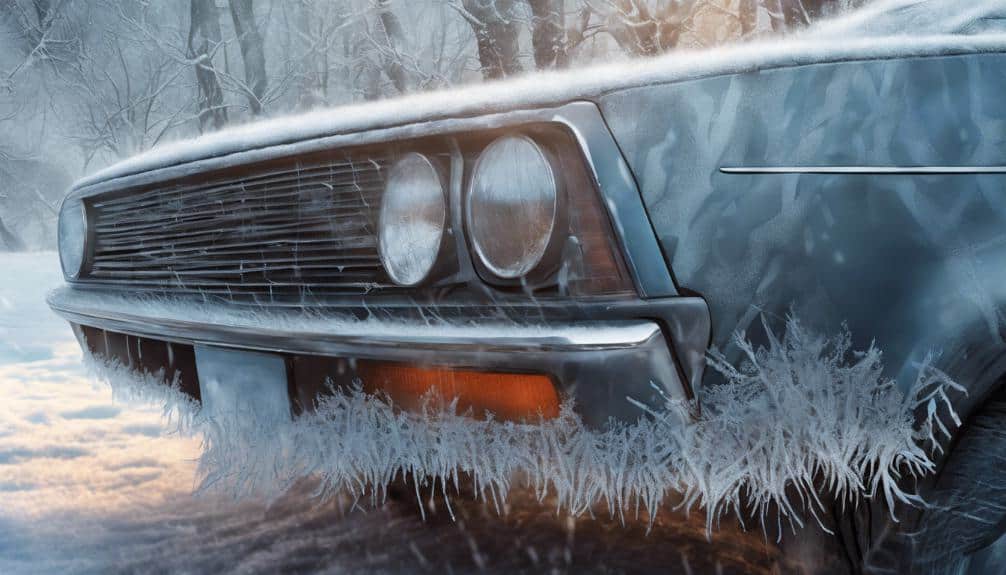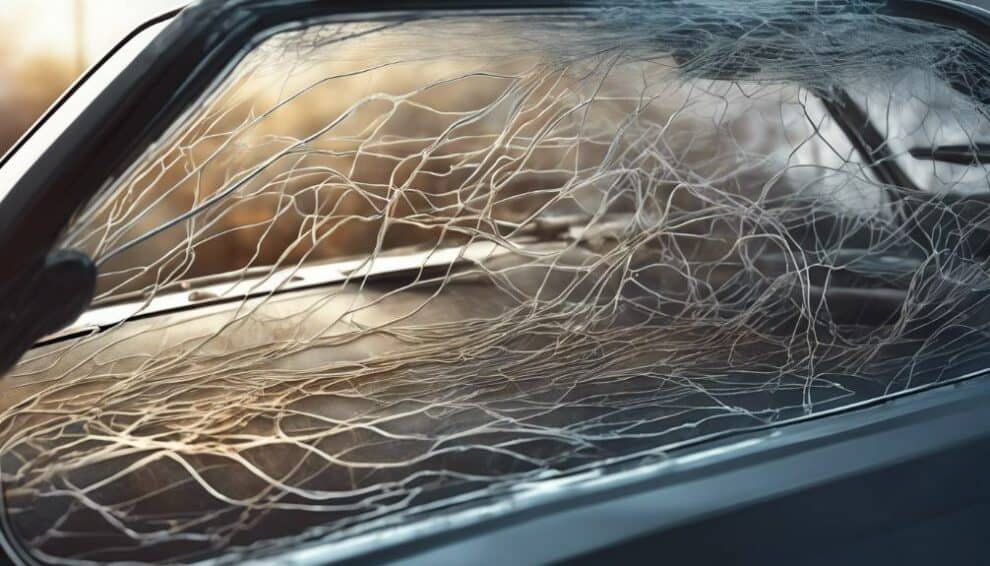To clear your view, car defrosters rely on HVAC systems and resistive heating elements, swiftly eliminating ice and condensation.
The HVAC system connects to your vehicle’s heating and cooling system, blowing warm, dehumidified air onto front and side windows.
Regular maintenance is important to prevent condensation and fogging for best efficiency. If your defroster seems ineffective in extreme cold or high humidity, check the HVAC system’s operation.
Secondary defroster systems with wire grids also aid in efficient defrosting. Properly functioning primary and secondary defrosters are essential for a clear view while driving.
Key Points
- HVAC system and resistive heating are primary options for clearing windows efficiently.
- Fresh, warm, dehumidified air from the HVAC system prevents condensation and fogging on the front windshield.
- Secondary defrosters with wire grids provide quick defrosting for rear windows and mirrors.
- For defogging without a primary defroster, maximize heater and AC settings while improving air circulation.
- Aftermarket options offer cost-effective solutions for custom installations and maintenance of car defrosters.
Types of Car Defrosters

When considering the types of car defrosters, you’ll find that the HVAC system and resistive heating are the primary options utilized for clearing windows efficiently.
Defroster installation for HVAC systems involves connecting the unit to the vehicle’s heating and cooling system, allowing warm, dehumidified air to be blown onto the windshield, effectively clearing front and side windows.
This type of defroster is known for its quick action in removing fog and frost.
On the other hand, resistive heating, commonly used for rear windshields and mirrors, is highly effective due to its direct heating of the glass surface, melting ice and eliminating condensation swiftly.
Defroster effectiveness is vital for safe driving, ensuring excellent visibility in various weather conditions.
For rear windshields and mirrors, secondary defroster systems incorporating wire grids with resistive heating are often used to provide an additional layer of clarity.
When it comes to aftermarket options, they offer alternatives for enhancing or repairing both primary and secondary defrosters, catering to individual preferences and needs.
Primary Car Defrosters Operation
To understand how primary car defrosters operate, it’s important to grasp the mechanism behind drawing in fresh air through the HVAC system and directing warm, dehumidified air onto the front windshield.
The HVAC system efficiency plays a vital role in maintaining clear visibility inside the vehicle.
Regular maintenance of the HVAC system guarantees peak performance of the defrosters, preventing issues with condensation and fogging on the windshield.
Weather conditions, such as extreme cold or high humidity, can impact the defroster’s ability to clear the glass effectively.
During these conditions, the HVAC system must work harder to dehumidify the air and maintain a clear view for the driver.
Secondary Car Defrosters Functionality

Curious about how secondary car defrosters effectively clear rear windshields and mirrors? Secondary car defrosters use a heating element and electrical resistance to swiftly tackle foggy or icy conditions on your rear windshield and mirrors.
Here’s how they work:
- Heating Element: Secondary defrosters feature wire grids that act as the heating element. When electrical current flows through these grids, they generate heat to defrost the rear window efficiently.
- Electrical Resistance: The wire grids in rear windshield defrosters and heated mirrors have high electrical resistance.
This resistance causes the wires to heat up quickly, melting ice and eliminating fog for better visibility.
- Efficient Defrosting: By applying electrical current to the wire grids, secondary defrosters produce enough heat to clear rear windows and mirrors effectively.
These specialized systems work in conjunction with primary defrosters, ensuring a clear view all around your vehicle.
Understanding how secondary car defrosters function can help you appreciate their role in maintaining visibility and safety while driving.
How do car defrosters and headlights work together to improve visibility while driving?
When to light headlight way driving in dark or foggy conditions, car defrosters work to clear the windshield from moisture and frost, while headlights provide illumination for better visibility. Together, they ensure safe driving by improving visibility and reducing the risk of accidents.
Defogging Windshield Without Primary Defroster
Wondering how to effectively defog your windshield without using the primary defroster on your vehicle?
To quickly defog your windshield, start your car and crank up the heater to the highest setting. Redirect the airflow to the windshield-facing dash vents by adjusting the vent selector.
This method helps efficiently clear the fog from your windshield. Also, engage the air conditioning system to assist in removing moisture from the glass, aiding in the defogging process.
Opening your windows slightly can also improve air circulation inside the vehicle, further helping to clear the fog on the windshield.
Remember, manually wiping condensation isn’t recommended as it can cause glare and obstruct your visibility while driving.
Aftermarket Car Defroster Options

Considering upgrading your vehicle’s defroster system? Aftermarket car defrosters offer a range of options to enhance your visibility on the road. Here are some key considerations to keep in mind:
- Custom Installation: Aftermarket car defrosters can be tailored to fit your vehicle’s specific needs, providing a personalized solution for effective defogging.
- Maintenance Tips: Regular maintenance is vital to guarantee the longevity and efficiency of your aftermarket defroster.
Simple steps like cleaning the defroster grid and checking for any signs of wear can help prevent issues down the road.
- Repair Options: If your primary or secondary defroster system is malfunctioning, aftermarket defrosters can offer a cost-effective alternative to traditional repairs.
Whether it’s repairing grid-style rear defrosters with conductive paint or opting for a new 12V defroster, aftermarket options can provide a practical solution to keep your windows clear.
As an Amazon Associate we earn from qualifying purchases.










